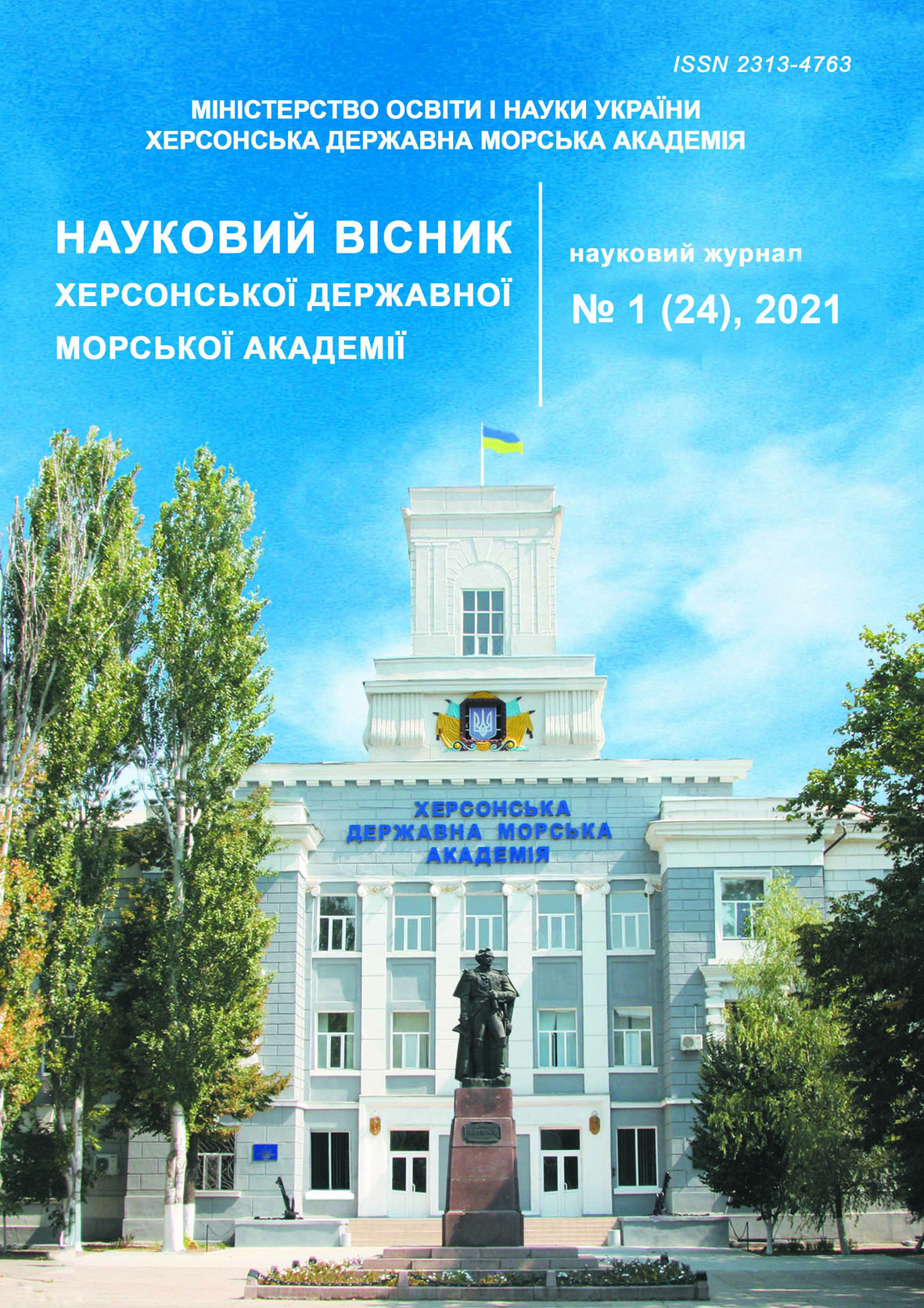INFLUENCE OF MALEIC ANHYDRIDE ON ADHESIVE AND MECHANICAL PROPERTIES OF EPOXY MATRIX FOR PROTECTION OF VEHICLE PARTS
10.33815/2313-4763.2021.1.24.082–092
Abstract
The sustainability of application of epoxy materials, distinguished by improved performance characteristics, has been shown. However, the improvement of the above properties in the complex is provided by the introduction of modifiers, plasticizers, fillers that are reactive to the epoxy oligomer. This ensures an improved interfacial interaction, which, in turn, advances the properties of polymer composites. As the main component for the binder in the formation of epoxy materials, we have chosen an epoxy diane oliomer of the ED-20 brand. Polyethylene polyamine hardener has been used for epoxy compositions crosslinking. Maleic anhydride has been used as a modifier to improve the properties of epoxy composites. The modifier was introduced into the binder at a content of from 0.10 to 2.00 mass.% per 100 mass.% epoxy oligomer ED-20. Molecular formula of the modifier: C4H2O3. The molar mass is 98.057 g/mol. Appearance - white matter. Density - ρ = 1.314 g/cm (at 60 °C) and ρ = 1.480 g/cm (at 20 °C). The optimal content of maleic anhydride modifier for the formation of a modified epoxy matrix with improved adhesive and mechanical properties has been established. It has been proved that when forming composites with improved adhesive, physical and mechanical properties, it is necessary to form a composition of the following formulation: epoxy oligomer ED-20 (q = 100 mass. %), polyethylene polyamine PEPA hardener (q = 10 mass.%), modifier maleic anhydride (q = 0.25 mass.% by weight). The formation of that kind of material provides, in comparison with the original epoxy matrix, an increase in the following indicators of composites properties: adhesion strength at separation by 1.3 times (from 24.8 MPa to 31.1 MPa); breaking stresses in bending 2.4 times (from 48.0 MPa to 117.3 MPa); impact strength
1.9 times (from 7.4 kJ / m2 to 13.7 kJ/m2). Note that the modulus of elasticity and residual stresses of that kind of material decrease in comparison with the original epoxy matrix by a factor of 1.2 (from 2.8 GPa to 2.4 GPa and from 1.4 MPa to 1.2 MPa, respectively). It is advisable to use the obtained composite in the form of a matrix in the formation of single or multilayer protective coatings for various functional purposes.
References
2. Rodyushkin V. M. (2008). Issledovaniya tekhnicheskogo sostoyaniya materialov i konstrukciyj metodami akusticheskogo zondirovaniya. Extended abstract of Doctor’s thesis. Nizhniyj Novgorod. 39.
3. Rodjkina A. V. (2019). Zathita korpusnihkh konstrukciyj sudov i plavuchikh tekhnicheskikh sooruzheniyj ot lokaljnihkh korrozionno-mekhanicheskikh razrusheniyj. Doctor’s
thesis. Nizhniyj Novgorod.
4. Ogneva V. V., Burmistrov E. G. (2014). Analiz faktorov, opredelyayuthikh skorostj iznashivaniya korpusov sudov vnutrennego i smeshannogo (reka-more) plavaniya. Kongress Mezhdunarodnogo foruma «Velikie reki», 317–321.
5. Komsta H., Vitenko T., Buketov А., Syzonenko О., Bezbakh О., Torpakov A., Kruglyj D., Appazov E., Popovych P., Rybicka I. (2021). Study of thermal stability and energy of activation of epoxy composites with particles of synthesised powder mixture for increasing reliability of vehicles. Scientific Journal of Silesian University of Technology. Series Transport, 110, 73–86.
6. Buketov A., Yakushchenko S., Abdellah Menou, Bezbakh O., Vrublevskyi R., Kalba Y., Cherniavska T., Zhytnyk D., Danylyuk O. (2021). Оptimization of ingredients upon development of the protective polymeric composite coatings for the river and sea transport. Mechanical Engineering in Transport. №2, В89–B96. Retrived from https://doi.org/10.26552/com.C.2021.2.B89-B96.
7. Brailo M. V., Buketov A. V., Yakushchenko S. V., Sapronov O. O., Dmytriiev D. O., Buketova N. M. (2021). Development of Epoxy-polyester Nanocomposite Materials with Improved Physical and Mechanical Properties for Increasing Transport Vehicle Reliability. Journal of nano- and electronic physics, Vol. 13, 1, 01003-1–01003-5.
8. Buckton A., Smetankin S., Yakushchenko S., Yurenin K., Sotsenko V., Brailo M., Kulinich V., Sapronov O., Kulinich A., Vrublevskyi R. & Bezbakh O. (2021). Physicalmechanical properties of epoxy composites filled with carbon black nano-dispersed powder for protection of transport vehicles. Composites: Mechanics, Computations, Applications: An
International Journal, Vol. 12, no. 2, 1–12.
9. Buketov А. V., Sizonenko O. М., Kruglyj D. G., Cherniavska Т. V., Appazov E. S., Klevtsov K. M., Lypian Ye. V. (2020). Influence of synthesized iron-carbides mixture on properties of epoxy coatings for transport. Journal of Engineering and Applied Science, Vol. 67, Issue 7, 1633–1648. Retrived from https://www.jeasonline.org/paper/1157/preview.
10. Retrived from https://uk.wikipedia.org/wiki/%D0%9C%D0%B0%D0%BB% D0%B5%D1%97%D0%BD%D0%BE%D0%B2%D0%B8%D0%B9_%D0%B0%D0%BD%D0 %B3%D1%96%D0%B4%D1%80%D0%B8%D0%B4
11. Buketov A. V., Smetankіn S. O., Chernyavsjka T. V., Braїlo M. V., Sapronov O. O., Socenko V. V., Yurenіn K. Yu., Kulіnіch V. G., Yakuthenko S. V., Yacyuk V. M. (2021). Metod pіdvithennya resursu roboti ustatkuvannya rіchkovogo ta morsjkogo transportu za rakhunok vikoristannya modifіkovanikh zakhisnikh antikorozіyjnikh pokrittіv : monografіya. Kherson : KhDMA.






